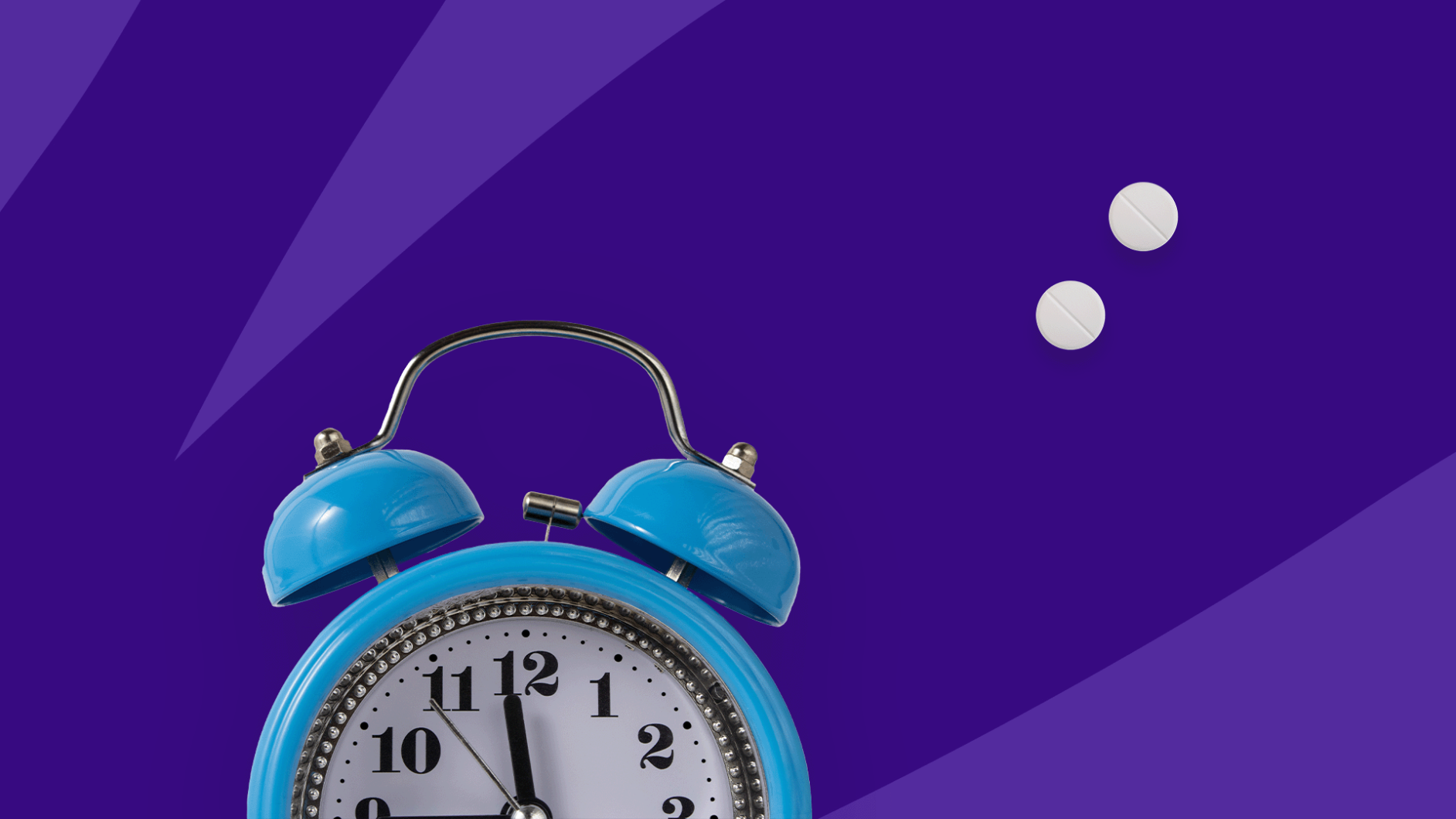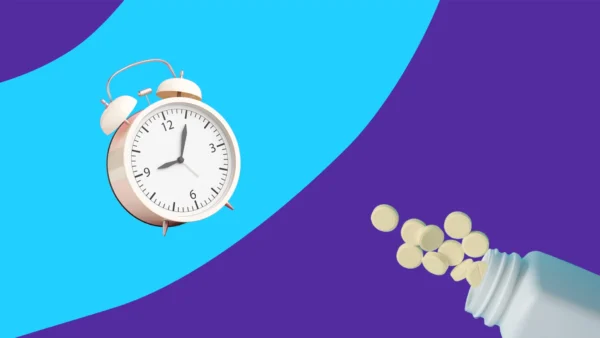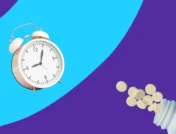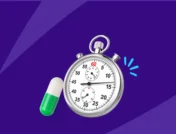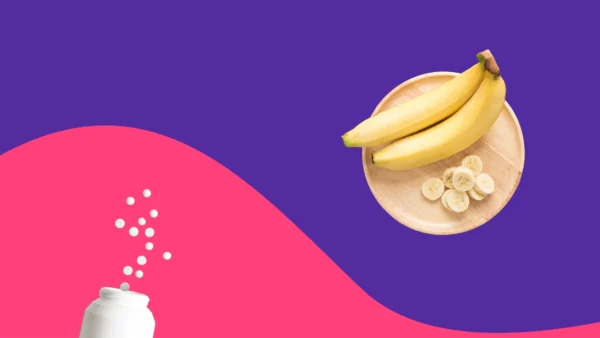When starting any new medication, a couple of key questions tend to bubble up, notably “Is this going to help me?” and “How long will it take to work?” Consider hyoscyamine, an antispasmodic medication that is often used to treat gastrointestinal (GI) tract disorders. You may know this medication by its brand names, such as Levsin, Anaspaz, Hyosyne, Symax, and Ed-Spaz—in fact, you might have even taken it for a stomach or intestinal problem.
Here are the most important things to know about taking this medication, including how to take it correctly and how long you’ll have to wait before it starts working.
How does hyoscyamine work?
Hyoscyamine is considered an anticholinergic medication because it works by blocking the action of a neurotransmitter called acetylcholine. It acts on the smooth muscles within your digestive system, relaxing the muscles and decreasing the motion of your GI tract and bladder, which helps relieve any spasms. To a lesser extent, it also reduces stomach acid production and excessive production of saliva.
What does hyoscyamine treat?
Hyoscyamine is used to treat a variety of conditions, such as peptic ulcers, irritable bowel syndrome (IBS), cystitis, diverticulitis, bladder spasms, and nausea. Hyoscyamine is also sometimes used to treat symptoms of Parkinson’s disease and allergic rhinitis.
How should you take hyoscyamine?
As with any medication, it’s important to take hyoscyamine as directed. That includes both when you take it and how you take it. Hyoscyamine comes in several forms, including a tablet, an extended-release capsule, and a liquid. According to the National Institutes of Health, you can take the tablets or liquid three or four times a day, but you should only take the extended-release capsules twice a day.
You should typically take hyoscyamine about 30 to 60 minutes before a meal, unless your healthcare provider tells you otherwise. If you’re taking the oral form, “swallow the hyoscyamine tablet whole,” says Aniruddh Setya, MD, a pediatric gastroenterologist with KIDZ Medical. “Do not crush, chew, or break the tablet, as it may affect how the medication is absorbed.”
However, if you’re taking an oral-disintegrating or sublingual tablet, don’t swallow it. Instead, let the tablet dissolve in your mouth or under your tongue on its own. There are some versions that may be chewable, but be sure to speak with your pharmacist about the proper approach for your prescribed form.
How long does hyoscyamine take to work?
Hyoscyamine works pretty quickly. “There are two formulations that are frequently used, which includes the sublingual form, used under the tongue, which can work within minutes, or the oral form, which can take more than 30 minutes to work,” says Rini Abraham, MD, a gastroenterologist at Gastroenterology Associates of New Jersey.
The immediate release form should last six to eight hours, while the extended release version may last as long as 12 hours.
One important thing to remember: This medication won’t cure your medical condition. But it may make it easier for you to manage it—and keep managing it. Your provider may prescribe hyoscyamine to be taken a few times a day on a regular basis, or only if you are experiencing abdominal pain. Keep taking it even if you feel well, as that’s a likely sign that it’s working.
What are the most common side effects?
Because hyoscyamine is an anticholinergic medication, it may cause side effects associated with this type of drug.
Side effects can include:
- Headache
- Blurred vision
- Dizziness
- Drowsiness
- Disrupted sleeping
- Constipation
- Decreased sweating
- Flushing
- Dry skin
One very common side effect is dry mouth, which you may be able to ameliorate by sucking on hard candies or chewing sugarless gum, as well as drinking plenty of water. “However, not everyone will experience these side effects, and some people may have no side effects at all,” Dr. Setya says.
If you experience more serious side effects, notify your provider right away. More serious side effects may include:
- Fast or irregular heartbeat
- Difficulty urinating
- Vomiting
- Difficulty speaking
- Mood changes
- Decreased sexual ability
- Loss of coordination
If you have any kind of allergic reaction, like swelling of the face, lips, tongue or throat, or hives or rash, you should seek immediate medical attention.
“It is important to remember that everyone’s experience with medication is different,” Dr. Setya says. “The side effects you may experience will depend on several factors, such as your age, medical history, and other medications you are taking.”
Hyoscyamine interactions
Unless your provider cautions you to avoid any specific foods, you can eat normally when you’re taking this medication—but hyoscyamine can interact with other medications and alcohol.
For example, antacids may interfere with hyoscyamine or make it less effective, so you might check with your provider if you typically take this type of medication. Your provider might suggest taking your hyoscyamine an hour before or two hours after you take your antacid so that you don’t have to go completely without.
You may need to be careful about other medications you’re taking. For example, if you’re allergic to atropine or any medications in the same class as hyoscyamine, you should also avoid it.
According to the Cleveland Clinic, other medications that might interact with hyoscyamine include:
- Amantadine
- Benztropine
- Donepezil
- Galantamine
- Rivastigmine
- Tacrine
Some antidepressants and medications used to treat hay fever and allergies can also interact with hyoscyamine, so let your provider and pharmacist know about any medications—prescription or over-the-counter—that you may already be taking.
Who should avoid hyoscyamine?
For some people, hyoscyamine might not be the best choice of treatment. The NIH cautions that older adults (that is, people older than 65) should be careful taking hyoscyamine because they may be more prone to side effects.
It’s also very likely that your provider will advise you to avoid this medication if you live with any of the following conditions: a stomach or bowel obstruction, severe ulcerative colitis, myasthenia gravis, or urination problems. Also, people with glaucoma may want to steer clear of hyoscyamine.
While this med has been used to treat IBS, Dr. Abraham notes that the American College of Gastroenterology recommends against using agents like hyoscyamine on a routine basis for the treatment of irritable bowel syndrome.



